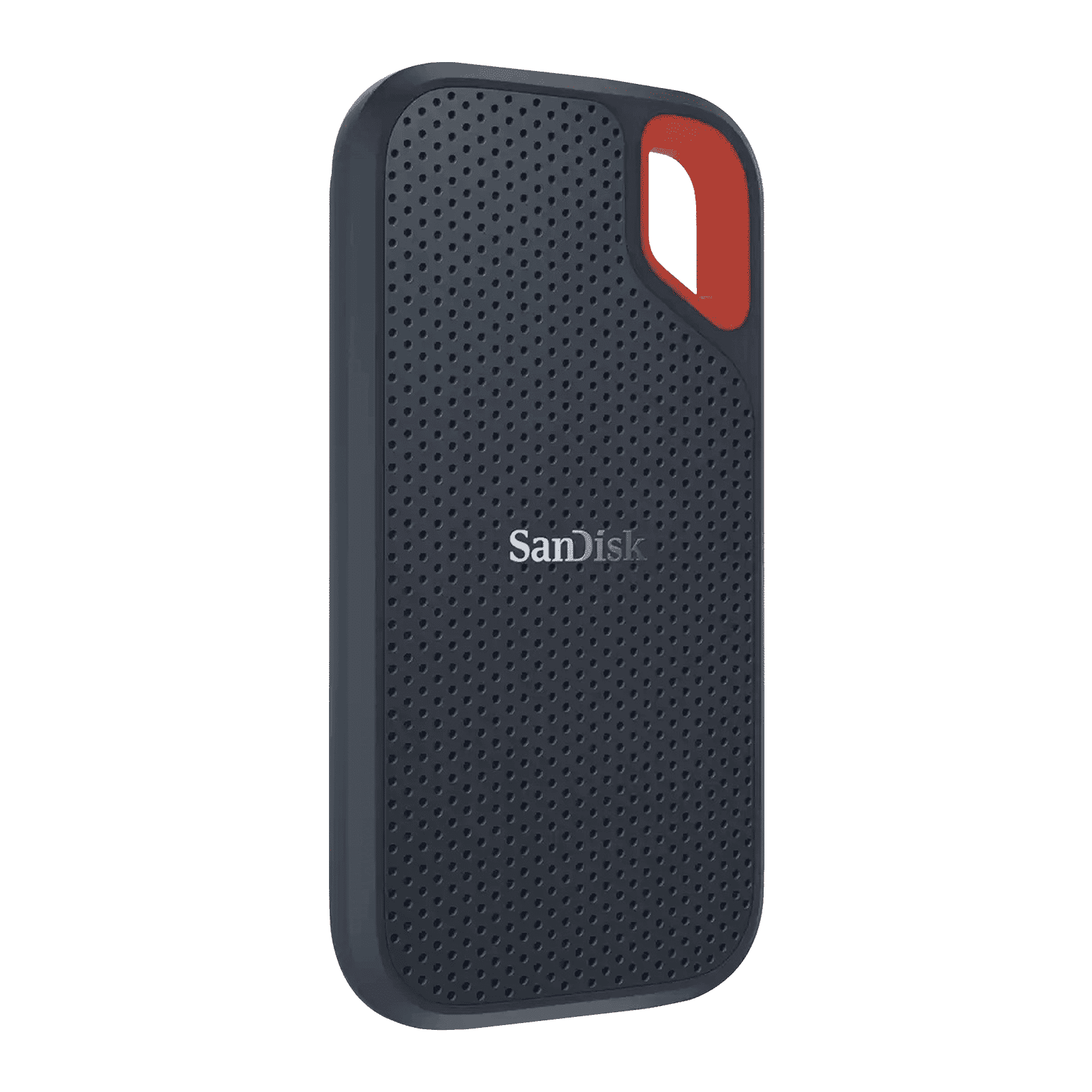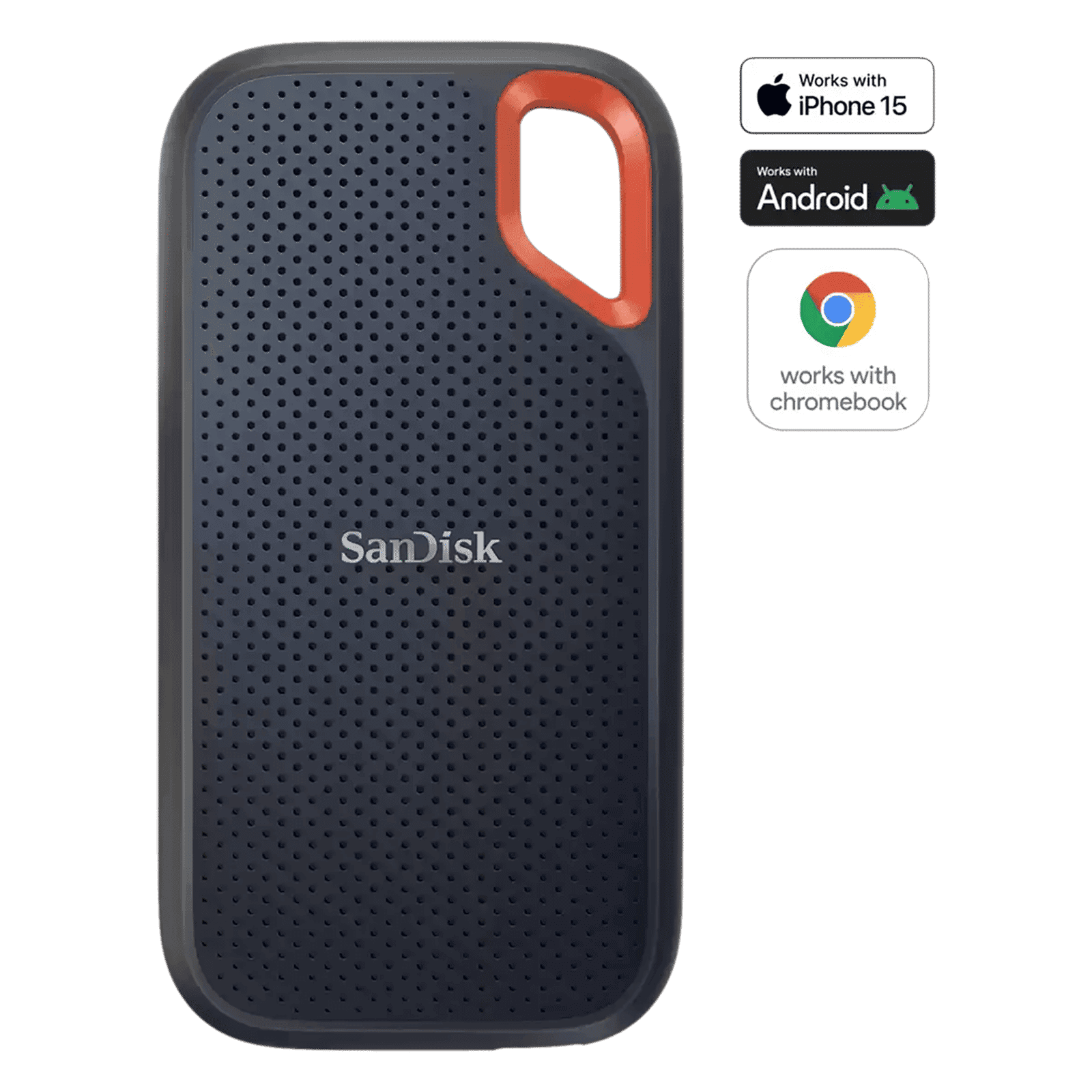%20(Presentation)%20(1600%20x%20600%20px)(526)-3e9e3b5f-26fd-4982-83d3-de2cc4ea538f.webp&w=3840&q=75)
Consumer Electronics
•05 min read

Buy SanDisk Extreme 500GB USB Type-C (3.2) Portable Solid State Drive (IP65 Water and Dust Resistance, Black) online at best prices from Croma. Check product details, reviews & more. Shop now!
Imagine having lightning-fast storage that fits in your pocket or seamlessly integrates into your computer. Choosing between a USB SSD and an Internal SSD is more than just a technical decision—it’s about matching your lifestyle with performance, reliability, and convenience. In this guide, we take you through the essential differences, from speed and portability to where each shines best, whether you are a tech enthusiast, a gaming aficionado, or simply looking to upgrade your everyday computing experience.
A USB SSD is an external solid-state drive that connects via a USB port, making it extremely portable. It is perfect for expanding your storage on the go, transferring data easily between devices, or backing up your cherished memories and important files. Its plug-and-play design ensures that you can start using it without any complicated setup.
An Internal SSD is installed directly inside your computer or laptop. It plays a crucial role in boosting your system’s performance by ensuring faster boot times, quick file access, and overall enhanced reliability. Often found in modern desktops and laptops, these drives leverage advanced interfaces that reduce latency and improve data transfer speeds.
As technology evolves, many users find themselves evaluating the differences between external and internal storage options to determine what best fits their needs. Whether it’s for intense gaming, creative multimedia editing, or everyday tasks, understanding how each type performs can help you save not only time but also earn extra rewards like NeuCoins on Tata Neu, adding greater value with every purchase.
When it comes to speed, Internal SSDs, particularly those using NVMe technology, offer extraordinary read and write speeds that can exceed expectations. In contrast, USB SSDs have performance that largely depends on the interface—most commonly USB 3.2. While they are fast compared to traditional hard drives, they typically do not match the peak speeds of their internal counterparts.
USB SSDs are renowned for their portability and ease of use. The simple, plug-and-play functionality means you can use them across a variety of devices, from PCs and laptops to gaming consoles. However, they may occasionally face bottlenecks due to USB interface limitations, which could affect the overall speed during data-intensive tasks.
Internal SSDs provide a marked advantage in speed by directly linking with your motherboard, resulting in reduced latency. This integration ensures that your system operates smoothly, even during load-heavy activities like gaming or video editing. Their robust performance makes them an excellent choice for long-term use in high-performance settings.

Buy SEAGATE One Touch 2TB USB (3.0) Portable Hard Disk Drive (Rescue Data Recovery Services, Black) online at best prices from Croma. Check product details, reviews & more. Shop now!
USB SSDs stand out when it comes to portability. They are ideal for frequent travellers, students, or anyone who needs reliable, on-the-go storage. Conversely, Internal SSDs are perfect for users who demand the highest performance directly integrated into their system. Think about scenarios like creating backups during travel or requiring rapid access to multimedia files at home—each has its place.
For gaming enthusiasts, USB SSDs provide a convenient external storage option, especially for consoles and laptops. They allow you to store a large library of games without the need for opening up your device. However, for those who prioritise faster load times and seamless gameplay, the inherent advantages of Internal SSDs can make a noticeable difference.
Deciding between external and internal storage largely depends on your specific use case. If you need flexibility, portability, or a quick solution for expanding storage, a USB SSD is a strong candidate. On the other hand, if you are setting up a workstation or gaming rig, the speed and reliability of an Internal SSD might be the best option. This balanced approach allows you to enjoy benefits such as earning NeuCoins rewards on every transaction, helping you save more on Tata Neu while purchasing products that meet your needs.
Internal SSDs are built for long-term reliability. Installed directly into your system, these drives withstand the rigours of everyday computing while providing excellent durability and a longer lifespan. Their direct integration into hardware ensures they are less likely to suffer from physical damage, making them a reliable investment for the future.
Although external USB SSDs are convenient, they are more vulnerable to physical damage during frequent transport. The external design means that they require a bit more handling care, and there is a slightly greater risk of data loss if not safeguarded correctly.
When comparing durability, Internal SSDs tend to excel in scenarios where the device remains stationary for extended periods. Their robust build and direct connection to the system allow them to last longer under typical usage conditions, while external SSDs, though remarkably resilient, might require extra caution to maximise their lifespan.
The cost of USB SSDs can be slightly higher in terms of price per gigabyte compared to Internal SSDs, reflecting their portability and ease of use. For internal measures, while the drive itself may be more affordable, additional expenses such as enclosures (if used externally) need to be considered. Each option offers great value, especially when you think about the extra savings you can earn as NeuCoins on Tata Neu.

Buy SanDisk Extreme 1TB USB Type-C (3.2) Portable Solid State Drive (Drop Protection, Black) online at best prices from Croma. Check product details, reviews & more. Shop now!
USB SSDs are remarkably versatile, working well across various devices—from PCs to gaming consoles. Conversely, Internal SSDs require careful attention to compatibility with your system’s motherboard slots (be it SATA or NVMe), ensuring you choose the right option for your specific setup.
One of the major advantages of a USB SSD is its simplicity: a plug-and-play solution that doesn’t require specialised installation. Internal SSDs, while offering enhanced performance, may involve a more intricate installation process which can be challenging for beginners. However, the rewards in speed and integration make them well worth the extra effort.
Insight Corner: Why Interface Speeds Matter
Did you know? The speed of your SSD is not just determined by the drive itself—it also heavily relies on the interface. Internal SSDs using NVMe can reach speeds up to 7,000 MB/s, while USB SSDs are often capped by the USB interface, typically around 1,000 MB/s. Choose wisely based on your speed needs and lifestyle.
Yes, SSDs, whether USB or internal, offer significantly faster performance and better durability than traditional USB drives due to their advanced, no-moving parts design.
The main disadvantages of external SSDs include occasional reduced speed compared to their internal counterparts, owing to USB limitations, as well as a higher risk of physical damage during transport.
Absolutely, USB SSDs provide rapid storage performance compared to conventional hard drives, although they typically do not match the speed of internal SSDs in data-intensive tasks.
No, SSDs, whether external or internal, are faster, more durable, and more energy efficient. External hard drives may offer larger storage at a lower cost but cannot compete in terms of overall performance.
Yes, a USB SSD can easily be used for gaming, especially for those who value portability. However, for the best performance with lower latency and faster load times, an internal SSD is generally recommended.
In summary, choosing between a USB SSD and an Internal SSD is all about understanding your personal requirements. A USB SSD offers unmatched portability, making it a perfect companion for travel and everyday storage demands. Meanwhile, an Internal SSD provides superior speed and long-term reliability, essential for high-performance tasks and critical data management. With this comprehensive FAQ guide, you can confidently decide which option aligns with your needs, whether it is for gaming, creative projects, or daily use. Embrace the convenience and rewards of smart shopping on Tata Neu, where every transaction can earn you NeuCoins to enhance your future purchases.